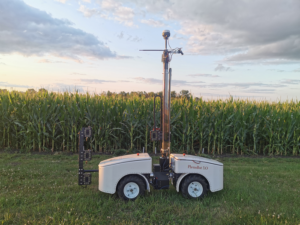Generations after the Morrill Land-Grant Acts of 1862 and 1890 were passed by Congress, land-grant universities are still a dominant force in American education. In particular, their focus on agriculture, science, and engineering continue to contribute to advances in their respective fields. And the universities’ extension offices provide localized assistance to farmers throughout the states where they’re located.
But you don’t survive 150 years without seeing some changes to education, life, and industry. So how are these storied institutions adapting, and what challenges do they face? From funding to infrastructure, survival into the coming decades and centuries will require land-grant universities to continue responding to modern life.
A (brief) history of land-grants
The Morrill Land-Grant Acts laid the groundwork for a pivotal transformation in American higher education, ushering in the rise of land-grant universities. These acts allocated federal lands to each state for the establishment of colleges focused on agriculture, science, and engineering. The goal was to democratize education and foster practical knowledge that would drive economic development and innovation.
The first land-grant institution established under the Morrill Act, Kansas State University, opened its doors in 1863, setting the stage for a network of universities that would span the nation. These institutions were not only tasked with providing accessible education but also conducting research relevant to local agricultural and industrial needs. This mandate led to groundbreaking discoveries in crop science, livestock management, and agricultural engineering, fundamentally shaping the trajectory of American agriculture.
The Hatch Act of 1887 further bolstered the mission of land-grant universities by establishing agricultural experiment stations, where faculty members conducted applied research to address pressing agricultural challenges. This commitment to research and extension services strengthened the bond between academia and the farming community, ensuring that scientific advancements reached those who could benefit most.
In 1890, the Second Morrill Act expanded the land-grant system by providing federal support to historically black colleges and universities (HBCUs), thereby advancing education opportunities for African Americans in the agricultural sciences. This expansion underscored the land-grant ethos of inclusivity and access to knowledge.
Over the decades, land-grant universities have evolved to meet the changing needs of society, expanding their academic offerings beyond agriculture to encompass a wide range of disciplines while remaining rooted in their commitment to research, education, and outreach. Today, these institutions continue to play a vital role in advancing agricultural innovation, rural development, and community engagement.
Today’s challenges
Although land-grant universities are still an important place for agricultural science and guidance, these storied institutions are facing modern problems.
Take a study released by The Association of Public and Land-grant Universities in 2021.
It shed light on a pressing concern: the deteriorating infrastructure within land-grant universities, especially those focused on agriculture. Outdated facilities, including laboratories and classrooms, pose significant obstacles to delivering quality education and conducting cutting-edge research. This issue extends beyond the confines of academia, impacting the ability to provide essential extension services to communities. Without significant investments, land-grant universities risk failing to fulfill their mission in a modern world.
But the shifting nature of funding sources is one of the universities most significant challenges. Historically, these institutions have relied heavily on federal and state support to carry out their missions of education, research, and extension services. However, in recent decades, there has been a notable decline in public funding, necessitating a greater dependence on private funding and competitive grants. This shift not only places financial strain on these universities but also creates disparities among them, as some institutions are better equipped to attract private investment and secure grants than others.

The reduction in public funding impacts the ability of land grant universities to maintain and expand their programs. Federal and state funds traditionally supported core functions such as faculty salaries, infrastructure maintenance, and student services. With the decrease in these funds, universities are forced to seek alternative revenue sources, which often come with strings attached.
Generally, agricultural companies and university agricultural programs can collaborate in a positive way. But it comes with the risk that private donors and corporate sponsors may prioritize specific research areas or demand influence over academic agendas, potentially skewing the universities’ missions toward commercial interests rather than promoting a practical education.
The competitive nature of grant funding can also exacerbate inequalities among land-grant universities. Larger institutions with more established reputations and better resources are generally more successful in securing significant grants, while smaller or less well-known universities struggle to compete. This disparity can lead to a concentration of resources and opportunities at a few institutions, leaving others underfunded and unable to provide the same level of education and community service. As a result, the original intent of the land grant system, which aimed to democratize higher education and promote agricultural and technical knowledge across diverse regions, is undermined.
Conclusion
Land-grant universities played an important role in making educational opportunities more widely available to average people. Over their long history, they’ve also contributed to agricultural research and innovation, as well as training the next generation of farmers, veterinarians, and the like. We should honor these achievements by making sure they’re funded appropriately to meet modern problems.
Amanda Zaluckyj blogs under the name The Farmer’s Daughter USA. Her goal is to promote farmers and tackle the misinformation swirling around the U.S. food industry.



